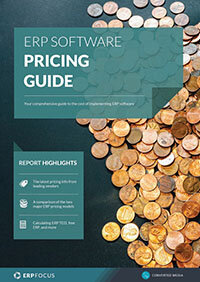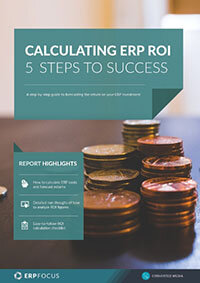Building an ERP budget: a step-by-step guide
Your organization decided to get a new ERP system. You know it will be expensive. You have the quote for software and you know you will spend a lot of money on things other than software along the way. How are you going to control your costs over the next few years? A budget is a tool we all know and most of us have used so it should work for our ERP project too.
1. Use vendor quotes as a baseline
Start with your ERP vendor quote. Some money is due at signing, some is due at implementation, and later there are periodic support costs. There are other costs known such as the updated server required.
Use this pricing guide to forecast baseline costs for your ERP budgets
Work with your project team, your vendor, your consultants and document all certain and likely costs including the amounts and timing. These will include
- Software
- Servers and network hardware
- IT additional costs
- Data conversion and loading into the new ERP
- Testing
- Training
- Support
- Other contingencies
2. Take into account long-term cost savings
You documented these already to get management approval for the project. If you expect to reduce IT staff by 18 people, when will the layoffs begin and how much do those people cost today? The ERP will allow faster production that will reduce inventory. Estimate the amount and timing of these benefits. Enter these in your budget
3. Sort out any potential cash flow problems
Here is where finance and management need to agree to the budget. If the negative cash flow at the start is too big, can some of the timing be moved? Can you borrow to cover the shortfall?
Borrowing will add interest charges to your budget. Is the expected return enough to justify the project? Should you look at a smaller project to get the required return? Budgeting is an iterative process at this stage.
4. Document the approved budget
Now that your budget is approved, write it down. Alternatively, enter it into an electronic system. Use your favorite project management software to keep the money budget synchronized with the flow of work. Publish your budget. Management and your users should know the plan and agree to follow it.
5. Capture actual costs
You will begin spending real money quickly. Enter the actual cost into your plan. If you budgeted $1.00 and actually spent $1.10, you are over budget. If some activity is on the schedule in July but did not occur until August, there were associated costs that also did not hit until August.
Show the change using debits and credits between the months. Your budgeted cost might have been correct but the timing could affect the overall plan. Perhaps you did not need to borrow in July and there is an offsetting cash inflow in August that means no borrowing is required.
6. Keep your budget up to date
Actual costs will not match budgeted costs. Extend the mix of actual and estimated cost to the end of the project and let management and finance see the continuously updated budgeted.
If the return on investment is trending down, can you change the project plan and budget to bring it back to the approved level? Use the budget as a management tool; do not let unexpected shortfalls happen. Your boss will not accept “Oops” when the project completes next year at a loss.
7. Finalize your figures and review
Finalize the budget and actual results when the ERP project is declared complete. Publish the results. You budgeted $X and spent $Y. What did you learn? Would you do it differently next time? There is valuable information in your budget. Use it now to improve the results on the next project.
Free white paper

ERP Software Pricing Guide
Get the latest pricing information on over 80 popular ERP systems, and learn how to budget for your ERP project in our free guide

Featured white papers
Related articles
-

Top 10 ERP selection criteria (including checklist)
The most important ERP selection criteria you should keep in mind during your selection process.
-

CMMC Compliance: What Aerospace and Defense Manufacturers Need to Know
Key insights on CMMC compliance, deadlines, and securing DoD contracts with CMMC 2.0 certificatio...
-

Funding an ERP: how and why?
What funding is available for ERP including loans and grants


